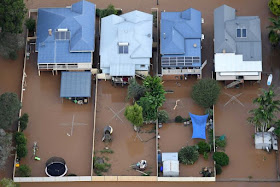 |
| Pine Island Glacier shelf edge. Jeremy Harbeck |
Stretching across a frozen plain more than 150 miles long, these glaciers, named Pine Island and Thwaites, have marched steadily for millennia toward the Amundsen Sea, part of the vast Southern Ocean. Further inland, the glaciers widen into a two-mile-thick reserve of ice covering an area the size of Texas.
There’s no doubt this ice will melt as the world warms. The vital question is when.
The glaciers of Pine Island Bay are two of the largest and fastest-melting in Antarctica. (A Rolling Stone feature earlier this year dubbed Thwaites “The Doomsday Glacier.”) Together, they act as a plug holding back enough ice to pour 11 feet of sea-level rise into the world’s oceans — an amount that would submerge every coastal city on the planet. For that reason, finding out how fast these glaciers will collapse is one of the most important scientific questions in the world today.
















